Manufacturing Industry News |
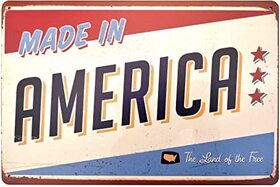 WASHINGTON -- Wednesday, the Coalition for a Prosperous America (CPA) applauded the Biden administration for proposing a new rule pursuant to Executive Order (EO) 14005, Ensuring the Future is Made in All of America by All of America’s Workers, which President Joe Biden signed in January. The proposed rule aims to increase American-made content in federal purchases and bolster critical supply chains. The effort builds upon the Biden administration’s efforts to modernize and strengthen implementation of the Buy American Act. With $600 billion in annual procurement spending, nearly half of which is in manufactured products, the Federal government is a major buyer of goods and services, including the single largest purchaser of consumer goods in the world. However, CPA remains concerned about possible future weakening of the content rules by using a “value added” test proposed by those opposing Buy America. More HERE at TMANews.com
0 Comments
OSHA offers Region V Noise Regional Emphasis Program to small and midsize Illinois manufacturers7/29/2021 SPRINGFIELD – The Occupational Safety and Health Administration (OSHA) has announced they are implementing a Regional Emphasis Program (REP) for workplace Exposure to Noise Hazards. Subsequently, OSHA will increase random inspections at facilities which fall under the North American Industry Classification System (NAICS) codes listed in the REP (CPL 04-00-27). The Illinois Department of Labor tells TMA that OSHA Region V will be targeting manufacturers with NAICS codes 32 & 33 (see below).
More HERE.  SPRINGFIELD - Several statewide business and retail organizations - including the Technology & Manufacturing Association - signed onto a letter to Governor JB Pritzker this week, calling on him to end enhanced unemployment benefits and reinstate the work-seeking requirements required in the past. “Illinois employers of all types and sizes are struggling to attract needed employees resulting in reduced hours and lost sales,” the group featuring manufacturing, construction, and retail associations said in a letter. “Those lost sales directly impact the budgets of the state and units of local government. Before we lose any more economic ground, now is the time to reinstate normal unemployment insurance operations, including work search requirements, and benefit levels.” TMA Executive Vice President Dennis LaComb explained why manufacturers signed onto the letter. "Illinois manufacturers are telling us month after month that one of their biggest concerns - if not the biggest - is finding skilled team members," LaComb said. "They are saying that the shortage of applicants is actually keeping their businesses from returning to pre-COVID levels, and Governor Pritzker can change that easily." LaComb said he agreed wholeheartedly with the Illinois Retail Merchants Association CEO Rob Karr's comment in The Center Square where he said “The faster that everyone’s back in the workforce, the faster Illinois recovers and hopefully gets back to pre-pandemic performance." The Center Square reports the letter was signed by Illinois Manufacturers' Association, Chicagoland Chamber of Commerce, Illinois Chamber of Commerce, Associated General Contractors of IL, National Federation of Independent Business, Illinois Hotel & Lodging Association, Technology & Manufacturing Association, Associated Builders and Contractors Inc., Illinois Automobile Dealers Association, Illinois Licensed Beverage Association, Automotive Parts & Service Association of IL, Illinois Lumber and Material Dealers Association and Illinois Fuel & Retail Association, among others. TMA Poll finds IL Manufacturers unaware of latest Constitutional Right to Work Amendment Proposal7/22/2021  SCHAUMBURG - The overwhelming majority of small and mid-sized manufacturers in the Chicago area - once the most vital and crucial manufacturing regions in the United States - was surprised to learn that the Illinois General Assembly voted this year to place on the 2022 General Election ballot a question that would ban right-to-work laws. The effort is a majority victory for public and private sector labor unions in a state that has never allowed right-to-work laws for employers and could be the basis for imposing yet more union demands on non-union shops. The Technology & Manufacturing Association based in Schaumburg, Illinois conducted a survey last month among members that asked a question about how aware their members were of a question on the 2022 General Election ballot that has to do with the direction the state's businesses will take on union issues in the days to come. The proposed right to work amendment would provide that employees have a “fundamental right” to organize and engage in collective bargaining over wages, hours and working conditions. It would also prohibit the state or any local government from enacting so-called “right-to-work” laws, which prohibit contracts that make union membership a condition of employment. Of 130 responders, only 18% said they were aware of this addition to the Illinois State Constitution's Article 1 Bill of Rights being proposed on the 2022 General Election ballot: SECTION 25. WORKERS' RIGHTS (a) Employees shall have the fundamental right to organize and to bargain collectively through representatives of their own choosing for the purpose of negotiating wages, hours, and working conditions, and to protect their economic welfare and safety at work. No law shall be passed that interferes with,negates, or diminishes the right of employees to organize and bargain collectively over their wages, hours, and other terms and conditions of employment and work place safety, including any law or ordinance that prohibits the execution or application of agreements between employers and labor organizations that represent employees requiring membership in an organization as a condition of employment. (b) The provisions of this Section are controlling over those of Section 6 of Article VII. 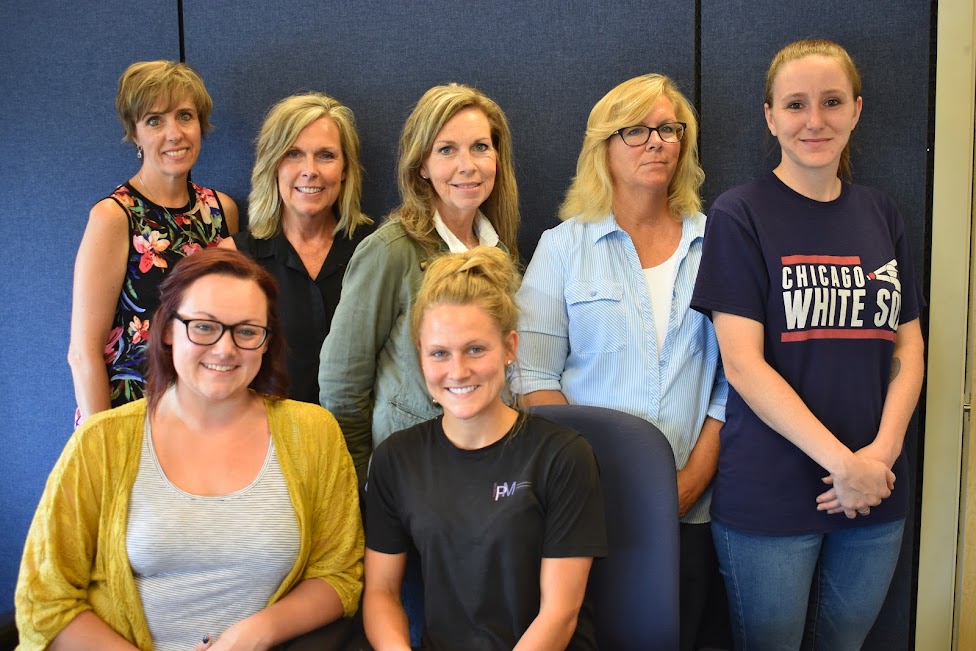 Members of Lakeview Precision Machining's Team - with owner Debbie Sommers (2nd from left back row) Members of Lakeview Precision Machining's Team - with owner Debbie Sommers (2nd from left back row) More and more middle school girls are showing interest in science, technology, engineering and math – the four basic principles of manufacturing. In September for the first time in its 10-year history, 14-year old girls won all five top prizes in the Broadcom MASTERS STEM Competition. The Broadcom MASTERS winners were chosen from the 30 finalists (18 girls and 12 boys) selected from 2,348 applicants in 47 states. Those five winners - selected by a panel of distinguished scientists, engineers and educators – won prizes ranging from $10,000 to $25,000. Each finalist’s school will receive $1,000 from the Broadcom MASTERS to benefit their science program. The spiked interest in science, technology, engineering and math among girls confirms the perception that more and more young women are thinking of careers in engineering, science and manufacturing as something they could consider for themselves. That is a breakthrough for American manufacturers – who are very concerned about the industry’s future workforce. Up until now, girls were, for the most part, encouraged to pursue interests more in the service or education industries – people-oriented careers, rather than production-oriented. That’s changing according to a new survey by Emerson. Six in ten Americans are interested in pursuing STEM careers now. However, there’s a problem. Only 39% of those Americans ”felt encouraged to do so.” And for women, two out of three said they were not encouraged to pursue STEM careers. And why did they feel that way? 1. The traditional stereotypes against women and 2. The lack of female role models in the STEM field. The Role Models Are There Over the last five years, TMA’s News Bulletin has profiled an array of women in manufacturing. While several chose manufacturing careers as part of their family legacies, others voluntarily moved from service industries into manufacturing. One thing has been in common among those female role models TMA has profiled over the years: they’re hard working, committed to success and they resist being in the spotlight. In fact, it’s not easy to get women manufacturers to talk about their work. They’re just too busy taking care of business and employees to talk. Thus, the shortage of female role models – and part of the reason why Emerson found two out of three women say they were not encouraged to pursue STEM or manufacturing careers. Indeed, most women TMA has interviewed over the years said the issue of a person’s sex is a side one. What matters most, they say, is the person’s capabilities, interest and curiosity about the projects they’re undertaking. Women in TMA Committee Chairman Debbie Sommers started working at Lakeview Precision Machining as a receptionist just out of high school. The couple that owned Lakeview took her under their wings, and little by little, she learned about ordering, shipping, estimating, quality control and machining. The owners offered her the opportunity to invest in their company, and when one of the owner couple suddenly died, his widow sold the company to Debbie. She’s been successfully growing the company for 13 years now, and two of her adult daughters are actively involved in the business. “This industry is hurting for people – people in general – and I’ve found women to be very creative. We’re 50 percent women here at Lakeview. It just happened that way,” she said in the TMA profile interview. “But women need to know manufacturing is a viable business for them, and women can build viable careers in this industry.” For Debbie, a key benefit of owning a business is the direct positive impact providing employment has on the lives of others – something to which women tend to be attracted. “It is rewarding to make a difference in people’s lives,” she said. “I love to be able to have a positive impact on their lives. We do have a choice how we can help others and let them know they are cared for when they go home. That’s very rewarding,” she said. Hilary Mottl Schemmer and her sister Althea Mottl are following in their grandmother Rose Mottl’s footsteps at their now-fourth generation company, Atlas Tool Works. Althea oversees Atlas’ HR department and production while Hilary uses her mechanical engineering expertise as Atlas’ chief engineer. The business is a family affair, as their brother Zach and their parents Dan and Cindy are actively engaged as well. The three Mottl children “each have our own sandbox, our own responsibilities and talents, so we really complement and respect each other without getting in each other’s way,” Zach told TMA News Bulletin. “It works well for us.” In the case of TMA Board member Teresa Beach-Shelow, she was busy volunteering with two daughters’ activities and developing a career in banking when her husband Thom launched a new business in their garage. Thom’s knowledge of precision welding and laser technology matched up with Teresa’s skills in business and finance, Superior Joining Technologies took off, and the Shelows haven’t looked back. Having completed a major move in the past few years, Teresa is busy expanding her business and encouraging the next generation to consider manufacturing careers. “Thom and I feel strongly about encouraging young people,” she said. Number of Women in Manufacturing Grows And the list of successful women manufacturers among the TMA membership continues to grow: Francine Petrucci of B A Die Mold, Erica Wiegel of Wiegel Tool Works, Nicole Wolter of HM Manufacturing, sisters Stacey Bales and Sara Mortenson of Bales Metal Surface Solutions, Carol Ebel of Janler Corporation, Janet Kaiser of Ex-Cell Kaiser, and many, many others. If what the next generation of female manufacturers needs is encouragement and role models to inspire them to pursue meaningful STEM careers, they exist. The challenge continues to be just how to connect the two. For more information about the Women in TMA Committee and their activities, contact Sandy at [email protected]. By Fran Eaton. First published in TMA's November/December 2019 News Bulletin  A coating of zinc the thickness of a sheet of paper can protect a steel structure for 100 years. Galvanized coating is one of the most durable methods of protecting against corrosion that is currently available. That’s what Gatto Industrial Platers, Inc. offers, and what George Gatto Jr oversees every day. George Gatto Jr grew up around his family’s business, but spent ten years in real estate before accepting his father’s standing invitation to join Gatto Industrial Platers. During his teen years, George Jr worked summers at the family business – which led him to believe that particular work just wasn’t for him. “I’d spend 10 hours a day working and would go home exhausted, hot and dirty. Making something like $4.50 an hour, before taxes, as a teenager, I decided I’d do better mowing lawns,” he said. “A friend and I started mowing and made more money. That started me thinking about college and what career I’d work in.” Gatto studied advertising and marketing at Drake University, and headed into the real estate industry directly after graduating in 2002 – the very field of work that eventually led the Gatto Family into manufacturing. The older George Gatto was operating a machine shop when the opportunity came up to purchase a plating business in Chicago. Gatto – a tool & die maker himself – had started a small machining business making motorcycle forks. “He also got into making other things like the polished and plated poles to which velvet ropes for crowd control are attached. Soon he was making different furniture components, and learned how important plating was to each of them,” Gatto Jr. said. “My dad would go to the plants where they were plating and watch how it was done. The process looked productive, so when the opportunity came up for him to buy a plating company, he did.” The plating business seller was a member of the Gatto extended family, so Gatto Sr’s father came on to help the effort and ended up staying involved until he was 95 years old, just before passing away in 2018. In the meantime, the younger George Gatto Jr said he was struggling in a very difficult real estate market during the 2008 economic recession and its aftermath. One day, he accepted his dad’s invitation to join him at a lecture series hosted by the Technology & Manufacturing Association. During the dinner conversation, other TMA members began asking George Jr why he continued in the struggling real estate industry when his father was nearing retirement age – and would soon be taking his industry knowledge with him. “My dad was thinking about what his future was, so these guys heard this for awhile from my dad. They said to me, ‘Listen, you know you’re at a perfect point your life where you know you’ve been out working, and you’ve got maybe a five year window if you want to do this,’” Gatto Jr said. “’It’s going to be gone, they said, and you would have passed up a good opportunity.’” The next day after the TMA event, George Jr picked up the phone and shocked his father by suggesting they have a conversation about him joining the company. That was over ten years ago. Now George Gatto Jr is president of Gatto Plating and is serving on the Technology & Manufacturing Association’s Board of Directors. Gatto Industrial Platers, Inc. has grown exponentially in shop floor size and number of employees. The company moved from a 30,000 square foot two-story building in Chicago to another building they expanded to 200,000 square feet. There are currently 150 employed. During the COVID crisis, Gatto Industrial Platers fared well, George Jr said. Zinc plating is used in nearly all industries – from medical equipment to household appliances , automotive, heavy equipment to railroad needs. “Our sales were down, but we didn’t have to think about shutting down or doing anything like that. We did reduce hours and took a hit to sales in the second quarter,” Gatto said. “But we are coming through in good shape.” Gatto, 41, says his biggest personal challenge these days as president of Gatto Industrial Platers, Inc. is managing his time. He’s busy every day answering business questions, coming up with industry solutions and strategizing the company’s future – but he also has young family demands. The Gattos have three boys – ages five, three and one. The pressures mounted during COVID as his wife pushed ahead in her career while together they juggled childcare. Assistance via email from the Technology & Manufacturing Association was especially appreciated during the early days of the COVID crisis, he said. It helped keep the company’s decision-makers informed as to what state and federal government were doing while team members dealt directly with personnel issues that had never been an issue previously – and helped to answer crucial questions few had time to find on their own. Being a part of a trusted association network before crises erupted proved to be especially valuable during those early COVID days, he said. “TMA provided information about what was going on, and what others were doing in these situations. We could take ideas from what everybody else said, and apply that to what worked for us, like where to get needed supplies. That part of TMA is extremely valuable because you build those relationships in a time when you don’t you know necessarily need them, but they’re there when you do need them.” Gatto says he’s hoping to lead the business to double within the next five to 10 years – and that he will be counting on his involvement with fellow manufacturers in TMA to help him achieve that goal. “We have the infrastructure to grow that much. I’m interested in developing the technology here over the next few years, and I’ll be looking to others in TMA for ideas on how they’ve updated their companies’ equipment,” he said. While he may not be able to get as involved in TMA Young Leader activities as he was before his three sons came along, Gatto says he plans to continue to be involved in the TMA board for the next few of years. “I know firsthand how important TMA networking can be,” he said. “It changed my career path – something I never expected to happen.” More information about Gatto Industrial Platers, Inc is available at www.gattoplaters.com. The company is located at 4620 W. Roosevelt Road in Chicago. By Fran Eaton, TMA News Bulletin editor. Published first in the March/April 2021 TMA News Bulletin.  “I’m Tom Roeser. I’ve been at OTTO Engineering 30 years. That’s all you need to say about me in a profile.” Those words are indeed precise, efficient and sufficient, yet they also say so much more about the President and CEO of OTTO Engineering in Carpentersville, Illinois. Tom Roeser (pictured right) leads a 500-person company his late father Jack Roeser started alone in his basement 60 years ago. Since its start, OTTO Engineering has designed and manufactured control switches, and for over 25 years it has created audio accessories for demanding applications. “I could not have started this business,” Tom told TMA News Bulletin, “but my father would not have grown it this aggressively.” The elder Roeser worked for a substantial Illinois manufacturer before quitting his job and starting his one-man operation in 1961. The drastic career change contributed to the breakup of his family, but led to an especially close relationship between Roeser and his middle child, Tom. “My father and I developed a unique friendship. I would go to his factory to spend time with him. I began working there with him and three other employees he brought on. When you’re that close, you not only learn the technology, you learn about people,” Roeser said. “Through all that, we were able to build this company due to a mutual trust between the two of us.” Roeser went to Purdue University to study mechanical engineering. He landed a job with Baxter Pharmaceuticals, and along with 5000 others was laid off in 1986. An employee of OTTO called him and told him he needed to come to OTTO to help his father who was then 64, and contemplating the company’s future. Roeser decided to try. On his first day at OTTO, Tom’s father Jack took him aside to explain the plan for his company. “The employees can’t have two bosses – and the one they look to can’t be me. I want it to be you,” Jack said. “My father’s wisdom was amazing,” Roeser said. “He knew he had to let go, while he was here every day for a long time. He answered questions he was asked like an Encyclopedia Britannica, but you had to ask first if you wanted any information.” First Jack, then the two of them together gained several patents – many which were groundbreaking for the industry. Today, OTTO Engineering employs 500 men and women and the one company has expanded to three divisions, now including OTTO Controls and OTTO Communications. Roeser, now at age 69, is focused on the company’s future and the challenges that lie ahead for the manufacturing industry as a whole. Aware of the “silvering” of his longtime dependable team, he’s worked hard to reach out to the next generation with an emphasis on changing the public’s perception of the industry. OTTO’s new 90,000 square foot technology center is “the cleanest factory you’ve ever been in,” he said. “There was a strategy to making this building look like it does, and why we call it a ‘tech center.’” “Sadly, parents don’t even think of careers like these for their kids. That’s why we are so eager to give tours for students and parents. If we bring them in here, and they have any interest, the ones we have to hook is mom and dad.” OTTO now has 15 apprentices on site – all of which Roeser expects to be trained or continue training with the Technology & Manufacturing Association. This year, OTTO had three graduate from TMA’s three-year programs in tool & die and CNC machining. “High schools aren’t doing enough to help. We could develop our own curriculum here at OTTO, but TMA makes it easy, and it’s high quality training. Everyone with TMA says it is an exemplary program for training in CNC and tool & die, as well as mold making,” he said. Seeing young people progress at his company is especially rewarding and fulfilling for OTTO’s owner. He immediately shared a story about one of his employees. “One young man, Steve, didn’t have a clue what he wanted to do for a living. His mother worked in our machine shop. A couple of guys took him under his wing, and he grew into a successful career. He got himself a wife, a minivan, a dog and eventually, a house. For me the reward is not about the money – it’s about what a person can do with those resources,” Roeser said. “I didn’t do anything but let them be themselves,” he said. “He thanked me for giving him the freedom to do his job.” Roeser went on to explain his successful business philosophy. “Everyone loves jobs – but they tend to hate capitalists, job creators. You can’t say capitalists are bad if you love jobs, because you’ve also got to love the job creators. The job creators are not creating a job for you. They’re creating a need. And then you get to fill the need. “So I want people to know I’m a greedy capitalist because they should be, too. Self-interest is a great motivator, but that includes values. To be a good capitalist, you’ve got to be a good person, I guess.” The “greedy capitalist” Roeser has employed hundreds over the years, bought up 150 foreclosed Carpentersville homes, improved them and offered them back to the community, invested in struggling local businesses and committed time and resources to numerous non-profit groups, including local Boys Clubs. “People will say capitalism is immoral. But I would say the most moral thing is capitalism,” he said. “Think of this – you work for me today, I will promise to pay you tomorrow. You ship me those goods all across the world, and I promise to pay you in 30 days. That morality in that is much different from ‘You will do this, this way.’ “Capitalism is very moral. If you’re immoral, capitalism falls apart. Don’t pay one supplier - you’ll lose other suppliers. It is absolutely moral, it can’t be anything else. But it is self-interest. I win when they win.” But as the TMA News Bulletin interview concluded was the time when Roeser emphasized, “I’m Tom Roeser. I’ve been at OTTO Engineering 30 years. That’s all you need to say about me in a profile.” We said it, Mr. Roeser. But there was and is so much more… OTTO ENGINEERING, INC. 2 E. Main Street Carpentersville, IL 60110 By Fran Eaton, editor. First published in TMA's May/June 2021 News Bulletin
 SCHAUMBURG, IL - TMA new President Patrick Osborne started the month of July 2021 in a new position at the Technology & Manufacturing Association headquartered in Schaumburg, Illinois. President Osborne, succeeding the retiring president Steve Rauschenberger, has a background that is unique and interesting, as we found out in the June 2015 TMA News Bulletin: Patrick Osborne emigrated from Ireland when he was 18 years old. He did so for one reason: the “plethora of opportunity” in America. Trained at an Irish state school to be a tool and die maker, his first job in America was at a mold-making company. Today, as TMA’s Vice President of Training & Education, Patrick says he’s training tomorrow’s “surgeons of steel.” TMA News Bulletin (NB) sat down with Osborne just before TMA’s 2015 Related Theory Graduation of 43 students. NB: What did you do before coming to TMA’s Education Department in 2011? Osborne: I was the director of education for the American Supply Association. In 1987, I came over from Ireland as a tool and die apprentice, got a job with a TMA member and ended up going into TMA apprenticeship training. I did that for a year before I left the trade and went back to college. I got a degree in English literature and a master’s in teaching. I worked in teaching, education publishing and association development. Then I saw the job posting for TMA. Twenty years later, I thought manufacturing had mostly moved offshore. I was surprised that the job at TMA was open, and thought I had a really good skill set with the apprentice training. The rest is history … NB: How are you using all that experience in your work here at TMA? Osborne: Rebuilding existing curriculum, building new curriculum and adding new programming. Hands-on training has become very important - especially CNC training. Reinvigorating the program is crucial. NB: Last year was the first year TMA had training graduates for several years. What was going on before last year? Osborne: A decade ago or so, TMA had graduating classes of close to 400. With the inclusion of spouses, family, speakers and guests, TMA rented out the Donald Stephens Convention Center in Rosemont for the graduation ceremony. Then training dwindled, dwindled, dwindled, and when I came on board in 2011, it had stopped altogether – falling from 400- ish down to zero. Now we’re back up to 150 students. NB: What happened to all those trainees from 2009 to 2014? Osborne: Offshoring of tooling is one thing. It went over to China and down to Mexico – that was a part of it. A lot of people in the manufacturing workforce became truck drivers as companies laid off and downsized. Automation was a huge component, too, so if you could bring in a robot, it would replace three, four men, and at the same time, technology increased. So manufacturing got leaner, meaner and smarter. The last graduating class before last year was 2009. It takes three years to complete a course, and when I came on in 2011, I started a class that graduated last year. This year’s class will be our second graduating class since TMA training started up again. NB: What are some of the talking points you use to attract new machinist students? Osborne: People interested in learning manufacturing skills often enter the workforce with no debt, and their employers often pay for their training. Case studies done a number of years ago compared those coming out of high school and going to college with those at tool and die training. After three years, a typical college student was in the red – underwater – because of student loans, and the tool and die student was earning while he was learning ... and was in the green. They’re “surgeons of steel” – a term I’ve heard students use about themselves. The thought of grinding something to within a tenth-of-a-thousand accuracy is like surgery. They really are surgeons of steel. NB: Do employers pay for their workers’ TMA training? Osborne: I don’t have the metrics on that, but I’d say 90 to 100 percent of the employers pay their student-employees to come to class at TMA. The employers pay them to work during the day, and for their schooling at night. Also their books – and some of them pay the student to come to class at night. So the students are getting paid 40 to 50 hours (there’s a lot of overtime out there) during the day, and then they’re paying employees to come to TMA training. NB: The first year of TMA training is mostly theory, but you’re trying to work in more hands-on training? Osborne: It’s a three-year program. First year is math, blueprint reading and machine tool technology. It is still mostly theory, but I did buy some manual equipment last year so students are getting access to machines. NB: What about the second year? Osborne: The second year is mostly theory, and it’s a whole year of machine tool technology. My goal is to have students access machines, especially CNC machines. Once we’re set up here (at TMA), we’ll definitely roll that out. The last TMA training year is a specialty year, when students choose whether to become tool and die makers, mold makers or CNC programmers. The CNC programmers are mostly on the machines, tool and die and mold are still more theory. I’m trying to put more tools into instructors’ hands to do a little more hands on. NB: How is the TMA training for tool making different from mechanical engineering? Osborne: Engineering is a different science. You can have an engineer design a tool and a mold, but the guys that actually get those prints and machine it, and make it, and build it – there’s a difference, and it’s a very different, unique skill set. I go back to “surgeons of steel,” because it’s not about just getting the components and putting them together, they have to fit precisely, and getting them to fit is a science in itself. You can feed stock steel into a form, and it depends on how it bends as to how it will work. Engineers have to visualize how it will work – CAM programs will help them do that – but it’s the toolmaker at the end that has to build it – his input is valuable. NB: What do you hope to see develop in TMA Training next year? Osborne: We are going to have an advanced CNC Training next year – definitely more high level CNC training that would entail 3-D Milling, Y-Axis lathe training, and the goal is to ultimately get up to 5-Axis training that will meet the needs of current members and attract new members to TMA. ------ As TMA’s Vice President of Training & Education, Osborne oversees fifteen instructors and staff as well as TMA Foundation staff that work to interest community colleges, high schools and youth groups into training. For Osborne, nothing could be more important than passing onto the next generation of American workers the same “plethora of opportunity” that enticed him as a young Irish immigrant to cross the Atlantic Ocean years ago. CONCLUSION - And now, Patrick Osborne is president of the Technology & Manufacturing Association, starting July 1st, 2021. |
AuthorManufacturing industry news is provided by the Technology & Manufacturing Association in Schaumburg, IL Archives
June 2024
Categories |



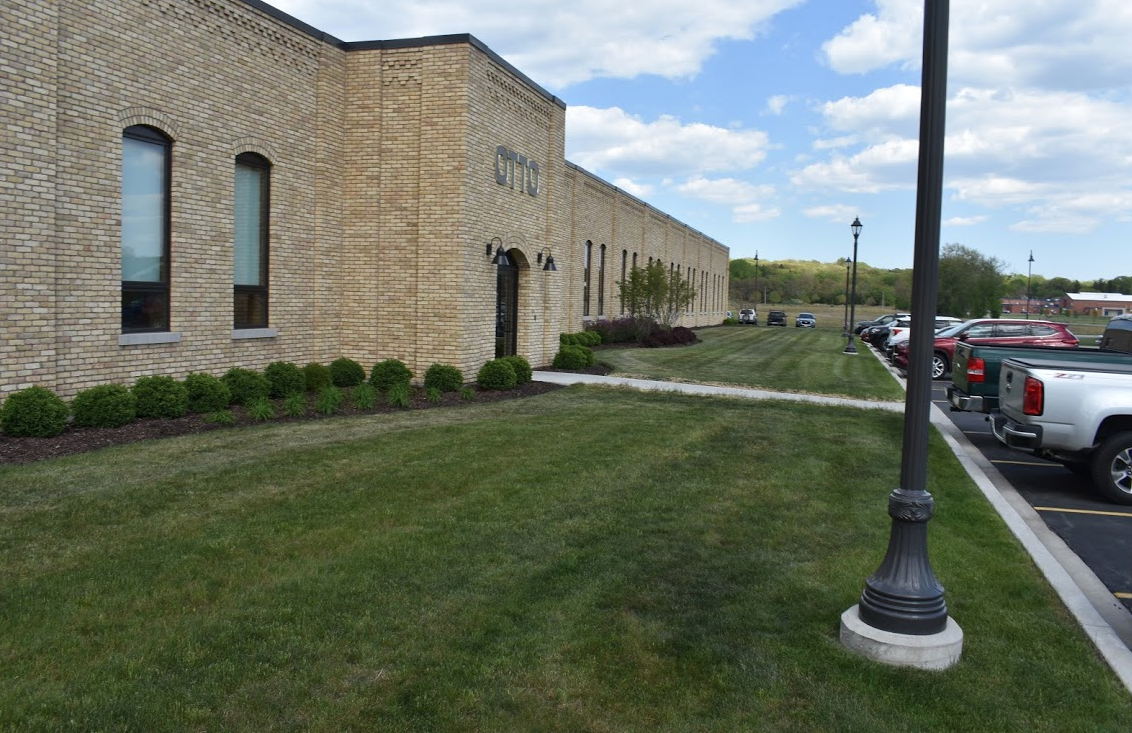
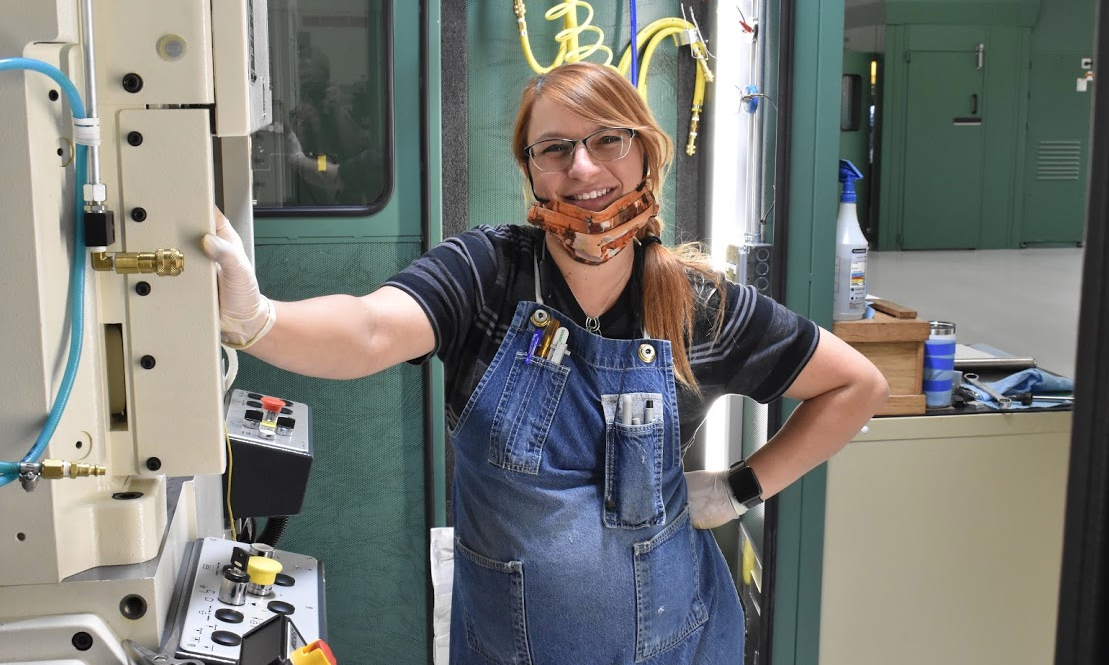

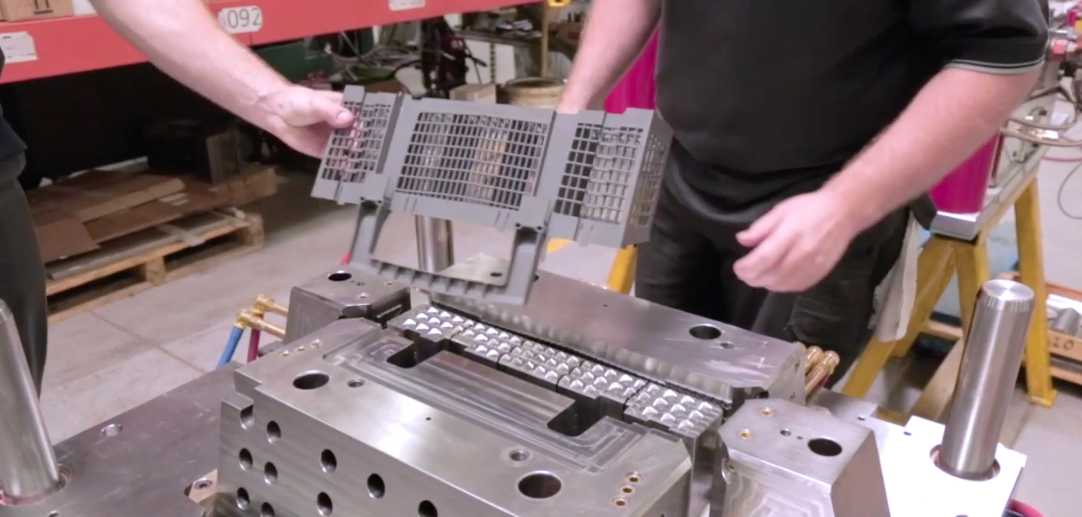
 RSS Feed
RSS Feed
